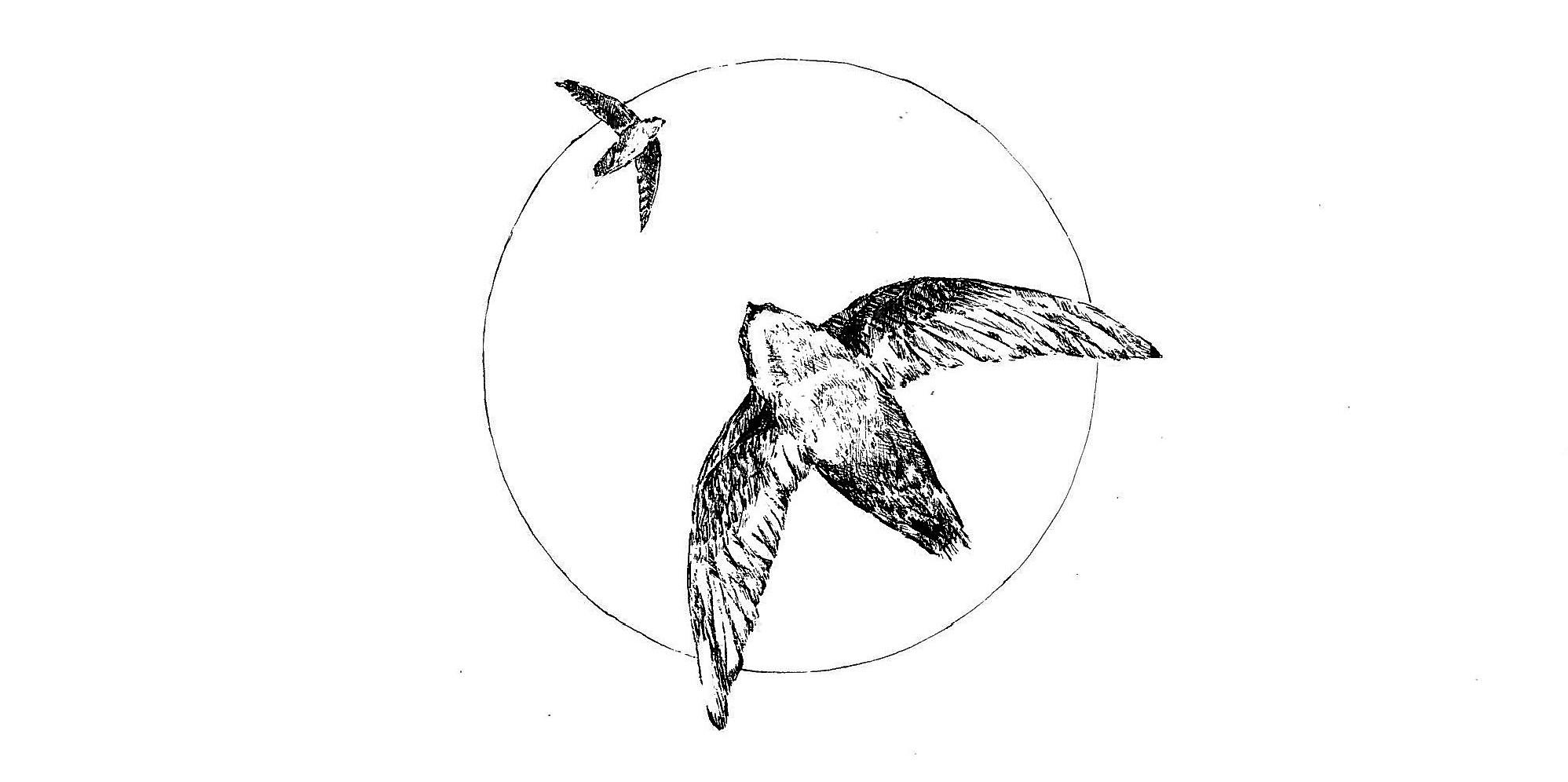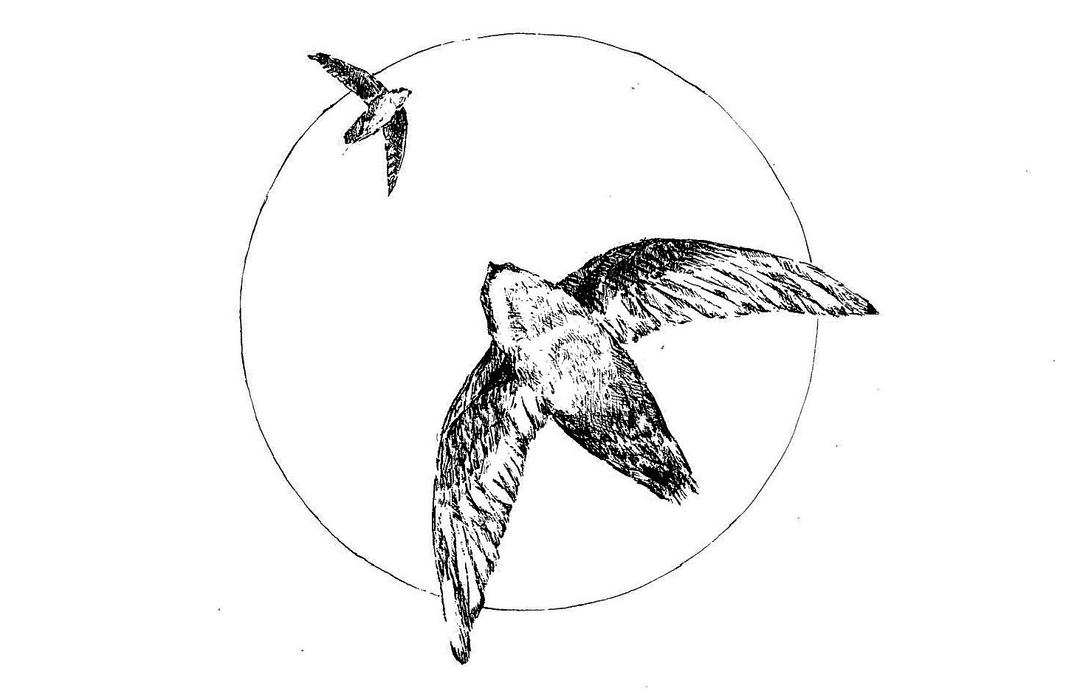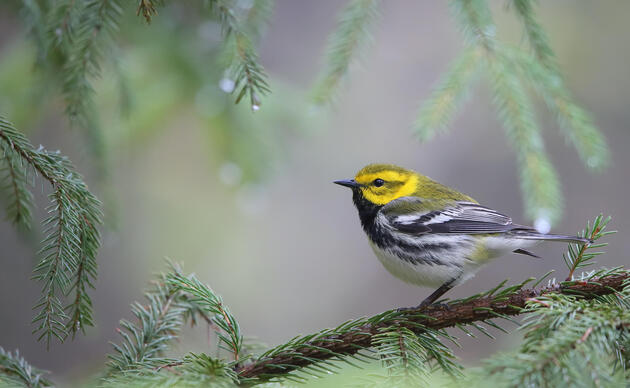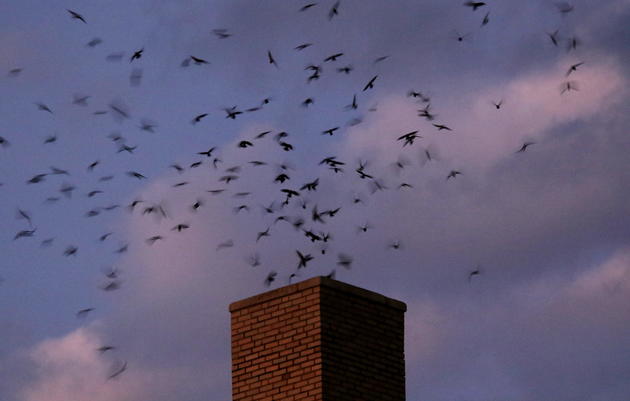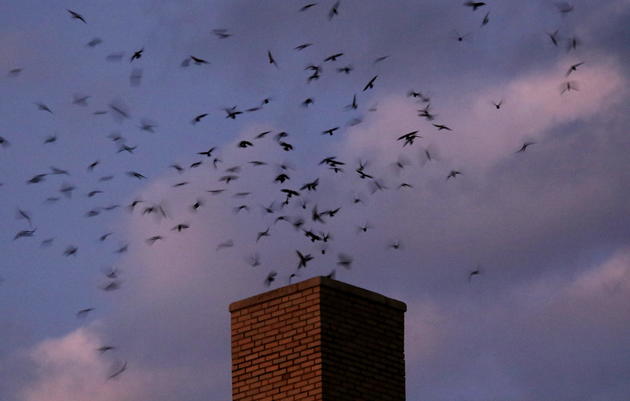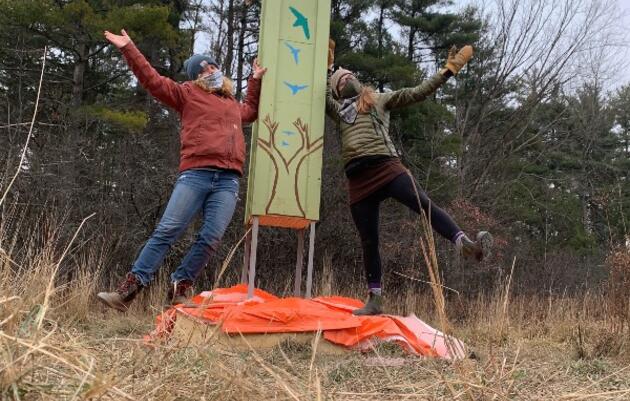Audubon Vermont is working with the Vermont Fish and Wildlife Department to monitor Vermont’s Chimney Swift population. Chimney Swifts are considered a “Species of Greatest Conservation Need” by the Vermont State Wildlife Action Plan, due to their population declines both in Vermont and throughout their entire range, and they are protected by Federal law under the Migratory Bird Treaty Act of 1918.
Their alarming decline is largely due to a loss of habitat and thereby roosting and nesting sites. Chimney Swifts rely on masonry and flue-tile chimneys during nesting and migration seasons. Chimney Swifts historically used large, hollow trees for nests and roosts, but as the old forests were cut down, they learned to use chimneys and other structures. Now, Chimney Swifts rely almost entirely on human-made structures for nest sites. Because they cannot perch like songbirds, Chimney Swifts need deep shafts in which to raise their families and roost at night. Unfortunately, many chimneys have been capped or removed, which has reduced the number of sites swifts can nest and raise young. Consequently, Chimney Swift populations are steeply declining, with a 53% percent drop between 1966 and 2007 in the United States.
Participate in our Chimney Swift surveys this summer.
Visit Chimney Swift Survey and 10 Easy Steps for Submitting Chimney Swift Surveys to Ebird to get started!
This summer’s survey is focused on identifying critical nesting and roosting habitats. Please submit any sightings you have, but more importantly, we would appreciate any reports of where birds are entering chimneys or other structures in the various towns and cities.
What Else Can I Do to Help Chimney Swifts?
- Keep masonry or clay flue-tile chimney tops open and dampers closed from March through October to provide the opportunity for Chimney Swifts to nest.
- Have your chimney cleaned in early March before the Chimney Swifts return from their winter home in South America.
- Metal chimneys should be permanently capped to prevent birds and other wildlife from becoming trapped.
- Email us at mfowle@audubon.org if you are interested in working with local conservation groups to construct Chimney Swift Towers in your area.
- Educate your friends and neighbors about Chimney Swifts.
More about Chinmey Swifts
The Chimney Swift is one of four species of swifts found in North America (Black Swift, Vaux’s Swift, and White-throated Swift are the others), and the only one found in the Atlantic Flyway. Chimney Swifts breed in the central and eastern United States and winter in the Amazon basin of Peru, northern Chile, and northwest Brazil. Adult Chimney Swifts are most often seen in groups in flight. When soaring, their long pointed wings support a short, wide body with a squared-off tail. Some folks say they look like “flying cigars” because of their body shape. Chimney Swifts' flight is accompanied by loud, chattering twitters. Both adult males and females are identical in appearance: sooty-gray to black with silvery-gray coloring on their neck. Their long wings cross over the tail feathers, which are tipped by pointed bristles. These tail bristles and claws are used to cling to rough vertical surfaces.
For more information on how to identify Chimney Swifts by sight and sound and natural history information see the Audubon Field Guide or All About Birds.
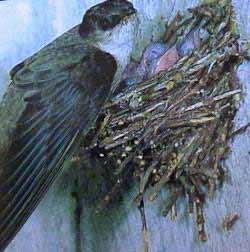
Fun Facts About Chimney Swifts:
- Chimney Swifts eat nearly one third of their own weight every day. These “aerial insectivores” devour flying insects, including mosquitoes, biting flies, and termites.
- Chimney Swifts are an important component of Vermont’s biodiversity, and their populations are declining range-wide (see more details below).
- Chimney Swifts’ aerial acrobatics and interactions with each other are spectacular to watch.
- Chimney Swifts have some amazing adaptations: they can “sleep” in flight; often young swifts do not stop flying for their entire first year.
About the Artist
Chimney Swift artwork by Katie Kennedy.
About the artist: My name is Katie Kennedy and I lived in Vermont for four years while studying Wildlife Biology at the University of Vermont. It was during this time that I learned about birds and bird watching, and I quickly found that I was even dreaming of seeing birds. I used drawing and painting as a way to understand birds more and improve my identification skills, and soon it became very natural to create artwork that was completely inspired by my love of birds. Although I love the excitement of spotting a rare bird, the familiar and common species, like the American robin, bluejay, and chimney swift make a connection to wildlife accessible to everyone. To me, chimney swifts invoke a feeling of summer in Burlington, comparable to creemees and sunsets over Lake Champlain. Their quiet chatter and whimsical flight patterns bring a smile to my face, and allow me to dream of soaring and gliding through sunny streets.
How you can help, right now
Donate to Audubon
Help secure a future for birds at risk from climate change, habitat loss and other threats. Your support will power our science, education, advocacy and on-the-ground conservation efforts.
Visit Audubon
It's always a good time to visit the Audubon Center. Trails are open to the public year-round. Visit us daily from dawn until dusk! Donations are appreciated.
Events
Adults, preschoolers, foresters, photographers, sugarmakers and families will all find opportunities to connect with nature.
Related Content
Oakledge's Chimney Swift Tower
The story behind the Burlington's Oakledge Park Chimney Swift tower

